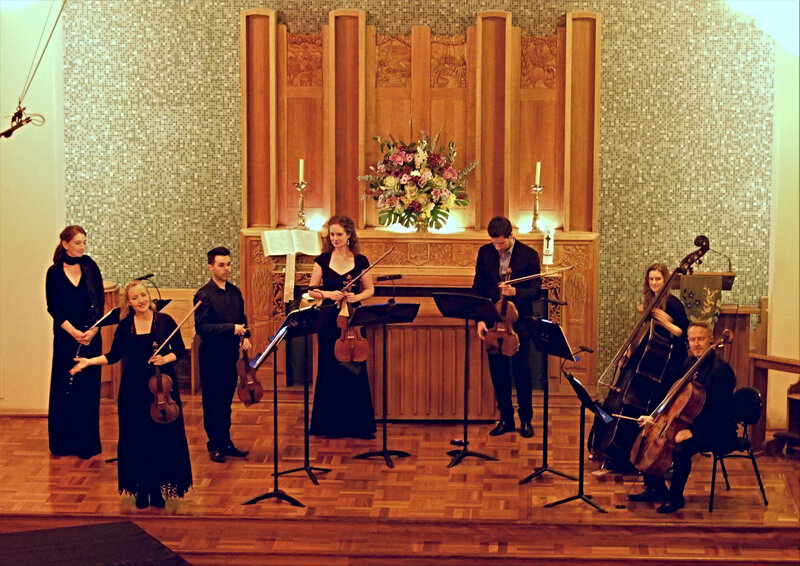 Music / “Beethoven’s Pastoral”. The Australian Haydn Ensemble at Wesley Uniting Church, Forrest, June 11. Reviewed by ROB KENNEDY.
Music / “Beethoven’s Pastoral”. The Australian Haydn Ensemble at Wesley Uniting Church, Forrest, June 11. Reviewed by ROB KENNEDY.
EXPLORING large-scale chamber works, the Australian Haydn Ensemble (AHE) has hit onto a magical formula to get these arrangements aired so audiences can experience symphonies and serenades in an intimate setting.
Historical chamber versions of the classics bring to light symphonic works in a smaller scale form, and in this concert, the AHE showed just how powerful they can be.
The players were Skye McIntosh, artistic director and violin, Matthew Greco, violin, Karina Schmitz, viola, James Eccles, viola, Melissa Farrow, flute, Daniel Yeadon, cello, Bonita Williams, double bass.
In a program of late 18th-century music, AHE began with the Boccherini “String Sextet in F Minor”, Op.23, No.4 G. 457. This devilishly delightful music in four movements developed simple melodies into a suave and passionate experience. It had moments of striking intensity through a clear progression. The delightful Minuetto danced sprightly and brightly, and the slow third movement radiated with passion. The music and the players were all ravishing.
Next came Mozart’s “Serenade in D Major”, (Haffner Serenade) K. 250, selections (arr. Masi c.1810), which was in four movements, reduced from the original seven. With opening echoes of other music from Mozart, this much more complex and rhythmically rich piece bounced along with joy.
With the inclusion of the flute, it added another tonal layer that caught the ear as it was the only woodwind instrument in the line-up. Why this is a serenade and not a symphony, I don’t know. Especially as the original version lasts for around one hour, and contains as much musical material and equal development as a symphony.
Andante means walking pace, and this movement was like listening to seven people as they walked and talked. This multi-voiced and complex section where the flute shined had a lot to say, and it did it beautifully. While sounding like many, the AHE performed as one.
After the interval came Beethoven’s “Symphony No.6 in F Major”, Op.68 (The Pastoral), which was arranged by William Watts c.1810, a violinist and the secretary of the Royal Philharmonic Society, formed in 1813.
Unlike any other works by Beethoven and others of his time, few pieces open with such a transcendental tune. The beauty of this music is in its held-back suspension that then glides forward to a sound that expresses the serenity of nature. The tension and release are skilfully written.
The double bass played by Bonita Williams added so much quality to the depth of sound. Without it, the balance would have been out, and the excellent playing helped its sound to project this grand music. At times, sounding almost like a full orchestra, especially in the final movements, the ensemble hit their straps in this work. Everything came together.
This warm music received long applause. It was just the ticket to heat things up on this cold and wet night in the capital.
Who can be trusted?
In a world of spin and confusion, there’s never been a more important time to support independent journalism in Canberra.
If you trust our work online and want to enforce the power of independent voices, I invite you to make a small contribution.
Every dollar of support is invested back into our journalism to help keep citynews.com.au strong and free.
Thank you,
Ian Meikle, editor




Leave a Reply